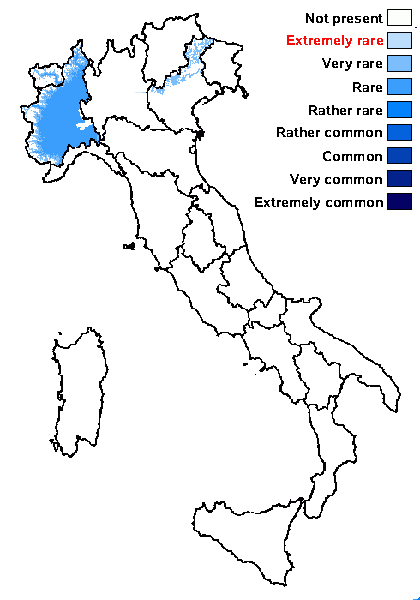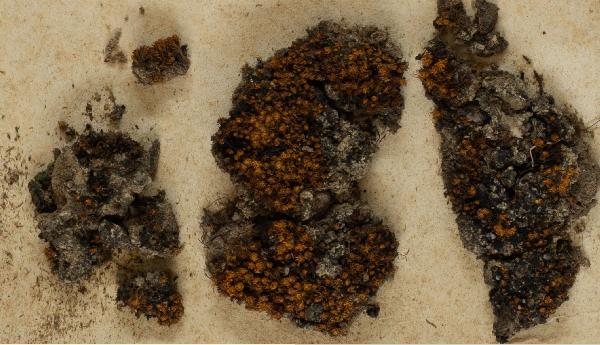Involucropyrenium tremniacense (A. Massal.) Breuss
Ann. naturhist. Mus. Wien, 98B: 40, 1996. Basionym: Catapyrenium tremniacense A. Massal. - Lotos, 6: 79, 1856.
Synonyms: Dermatocarpon tremniacense (A. Massal.) J. Steiner; Involucrocarpon tremniacense (A. Massal.) Servít; Verrucaria tremniacensis (A. Massal.) Nyl.
Distribution: N - Ven (Lazzarin 2000b), Piem, VA (Piervittori & Isocrono 1999).
Description: Thallus squamulose to subcrustose, beige to pale brown, dull, epruinose, thin, closely adpressed to the substratum. Squamules 0.3-1.5(-2) mm broad, 0.1-0.2 mm thick, rounded to crenate, flattened to slightly convex, smooth, contiguous, developing on a pale hypothallus; lower surface pale, attached by c. 4 µm thick, pale rhizohyphae. Upper cortex paraplectenchymatous, 10-25 µm thick, of small isodiametrical cells, poorly differentiated from the algal layer, overlain by a 20-50 µm thick epinecral layer; medulla and lower cortex not differentiated. Perithecia developing from the hypothallus among the squamules, globose, projecting, with an apical involucrellum reaching up to the half of the perithecium, up to 0.35 mm across. Exciple dark throughout, of tangentially arranged, elongated cells; hamathecium of periphyses, interascal filaments absent. Asci 8-spored, clavate, with biseriately arranged spores, the wall I-. Ascospores 1-celled, hyaline, ellipsoid, thin-walled, 13-17(-18) x 6-7(-8) µm. Pycnidia unknown. Photobiont chlorococcoid. Spot tests: cortex and medulla K-, C-, KC-, P-, UV-. Chemistry: without lichen substances.Note: a widespread terricolous species of open grasslands on more or less calcareous substrata, probably more common throughout the country.
Growth form: Squamulose
Substrata: soil, terricolous mosses, and plant debris
Photobiont: green algae other than Trentepohlia
Reproductive strategy: mainly sexual
Commonnes-rarity: (info)
Alpine belt: absent
Subalpine belt: absent
Oromediterranean belt: absent
Montane belt: very rare
Submediterranean belt: rare
Padanian area: absent
Humid submediterranean belt: absent
Humid mediterranean belt: absent
Dry mediterranean belt: absent

Predictive model
Growth form: Squamulose
Substrata: soil, terricolous mosses, and plant debris
Photobiont: green algae other than Trentepohlia
Reproductive strategy: mainly sexual
Commonnes-rarity: (info)
Alpine belt: absent
Subalpine belt: absent
Oromediterranean belt: absent
Montane belt: very rare
Submediterranean belt: rare
Padanian area: absent
Humid submediterranean belt: absent
Humid mediterranean belt: absent
Dry mediterranean belt: absent

Predictive model
 INDEX FUNGORUM
INDEX FUNGORUM
 GBIF
GBIF
 DOLICHENS
DOLICHENS



